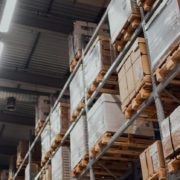Reduce Packaging Costs and Plan For Every Part
Packaging is one of the most essential parts of manufacturing. An inefficient packing process not only wastes time, but it can also be a waste of valuable resources. When looking at the plan for every part, or PFEP, there are some simple ways you can optimize the supply chain and work toward using less packaging, which will reduce your manufacturing costs. When you implement PFEP into your manufacturing process, you will reduce your costs related to receiving, producing, storing and even shipping your parts and products.
Design and Develop a PFEP Template
It can be beneficial to appoint a team to work on creating a PFEP template that works best for your business in particular. These individuals will look at how to optimize the packaging within your plant, as well as how to optimize the packaging on the materials and other products that come from your suppliers. For many companies, it’s easier to start with implementing a plan for your internal processes first since you have more control over these processes. The good news is there is automated PFEP software available that can help streamline this process and guide your team in making the right decisions. This software clearly defines your inventory, keeps track of inventory usage and recommends supply chain adjustments. All of this is done automatically with little or no input from your team, freeing up their time to focus on other aspects and allowing for fast adjustments that start saving money faster.
Gather and Organize Data
It can be time-consuming to gather data on packaging processes, especially when you’re dealing with multiple systems. This is particularly difficult at the beginning of the process, which can lead to frustration and a lack of motivation. You can help motivate your team by celebrating the identification of accurate data sources and tracking the overall data input the team makes. One of the ways you can improve the effectiveness of this process is to utilize formulas designed to calculate pull signals and planned maximum inventory costs, levels and days. Your goal is to better understand your inventory, particularly the parts purchased. It’s unnecessary to plan or act on the data at this stage in the process.
Maintain and Optimize the Data
The third step in the process is to optimize your packaging. For instance, you can work with a supplier to optimize the packaging on your inbound shipments to reduce those packaging and inbound logistics costs, as well as improve the inventory space in your plant and keep inventory at an appropriate level. When you input this information in your automated PFEP software, it will identify standard packs, container weights and inbound logistics costs, calculating your future state PFEP. Minor adjustments can then be made to identify where you can save money. When you work with your suppliers on this matter, you not only improve your own bottom line, but you can also help them save money in the process. It’s a mutually beneficial task that can help both businesses reduce costs and improve profits. Many companies can save up to 20% of their costs using this process.
Actively refining your PFEP should be a continuous process. While it may seem overwhelming and difficult to implement in the first place, once the above steps are completed, you will be able to more easily make adjustments and ensure your business is operating with lower costs for a higher rate of return.








